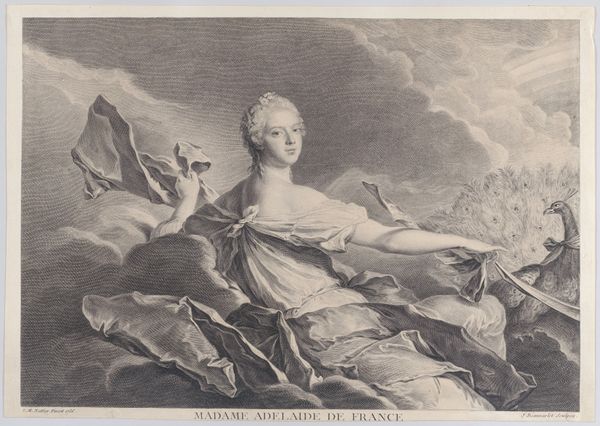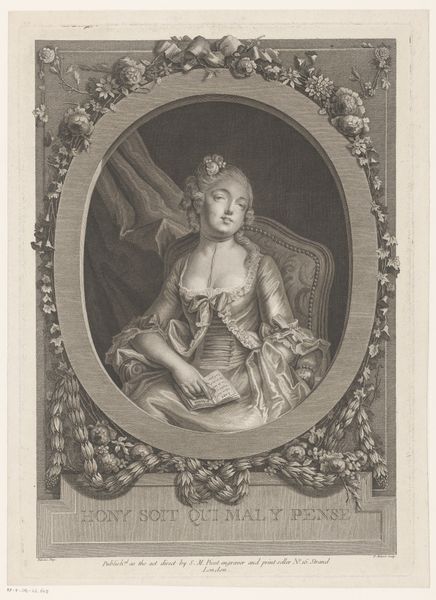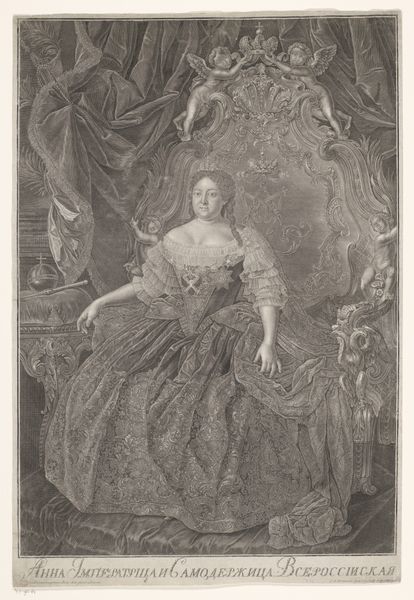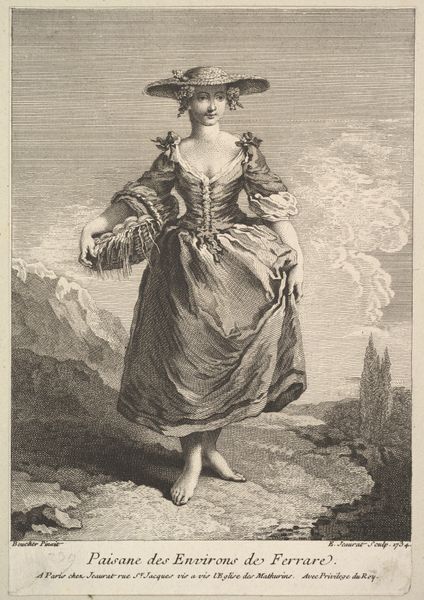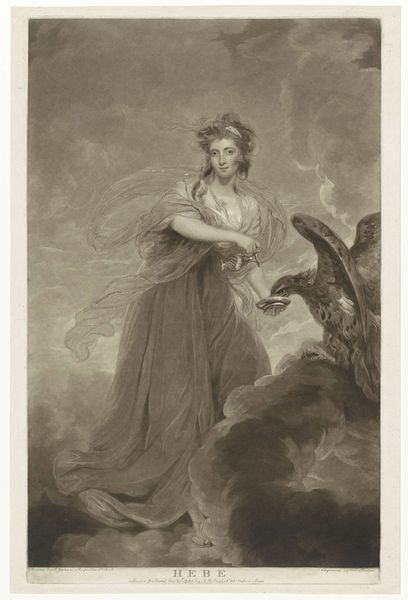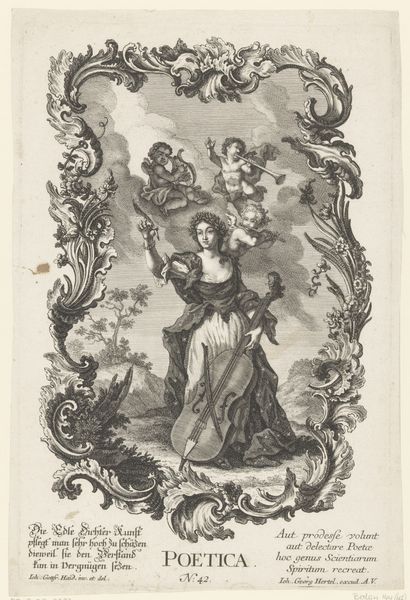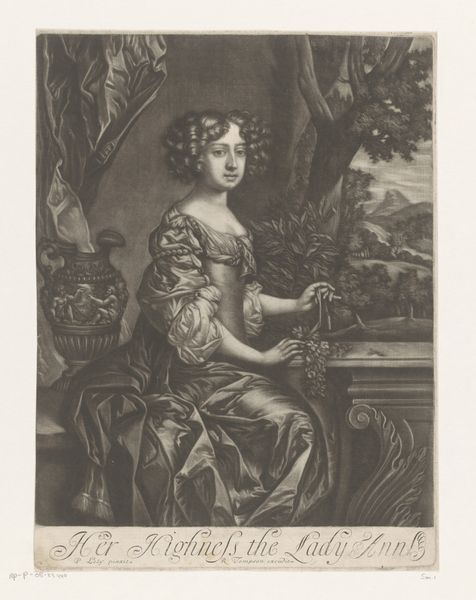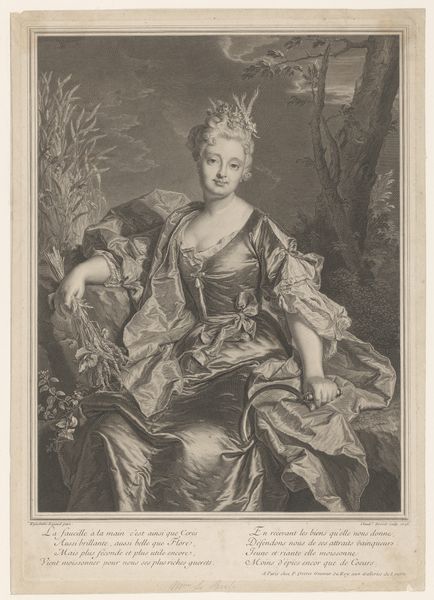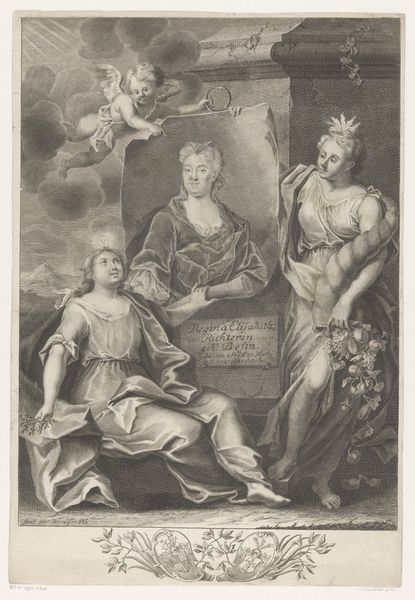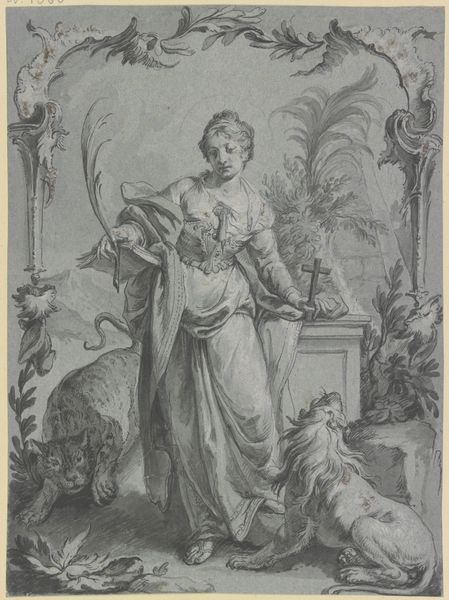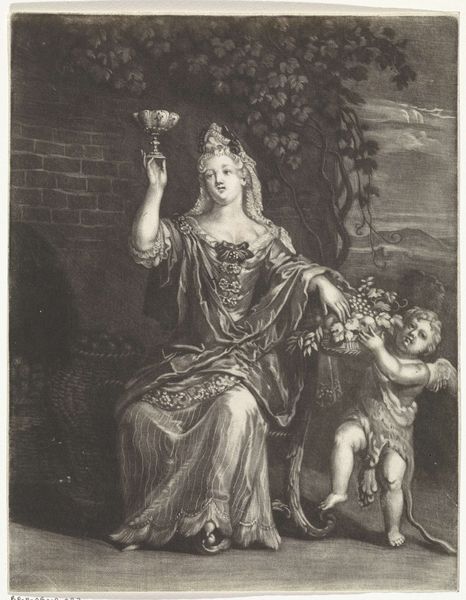
print, engraving
#
allegory
#
baroque
# print
#
history-painting
#
academic-art
#
engraving
Dimensions: height 516 mm, width 387 mm
Copyright: Rijks Museum: Open Domain
Editor: So, this is "Portret van Mademoiselle Duclos in de rol van Ariane," a print from 1714 by Louis Desplaces. The precision of the engraving is striking, it makes me wonder about the labor involved in producing this image. What are your initial thoughts on this work? Curator: I'm immediately drawn to the material aspects of this print. Think about the paper it's printed on, likely handmade, each sheet with its own slight variations in texture and absorbency affecting the final image. Then consider the engraver, Desplaces, whose skill transforms a copper plate into a matrix for disseminating this image. Who had access to these prints, and what value did they hold for them as commodities? Editor: That's a perspective I hadn’t considered. It feels very removed from our current digital means of image distribution. The way she's portrayed seems very performative. How did prints like these affect Mademoiselle Duclos’s public persona and the consumption of theatrical celebrity culture? Curator: Exactly. This isn't just about artistic skill; it's about the economics of image-making. The print medium allowed for a wider distribution, transforming her theatrical performance into a portable, reproducible commodity. Note how her costume, too, becomes part of this consumable image, further blurring the lines between her public image and the material trappings of her profession. Editor: So, understanding the means of production helps us interpret the social impact of the image itself? Curator: Precisely. It allows us to see how the act of creating and distributing art is never neutral but actively shapes how we understand identity, status, and even history. What once was displayed only in a particular city could, with a bit of commercial success, be appreciated – and owned – in multiple countries. Editor: I’m beginning to see how examining the physical print unlocks layers of meaning beyond just the artistic or historical. Curator: It provides insight into 18th-century celebrity culture through the lens of production, circulation, and the material reality of artmaking.
Comments
No comments
Be the first to comment and join the conversation on the ultimate creative platform.
